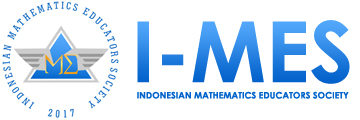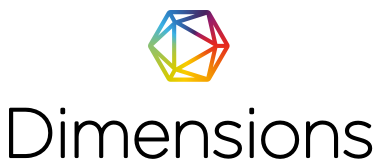Kemampuan Berpikir Kritis Siswa Dalam Menyelesaikan Soal Himpunan Berbasis Kesenian Wayang Topeng Kabupaten Malang Ditinjau Dari Self Regulated Learning
DOI:
https://doi.org/10.35706/sjme.v8i1.10842Abstract
Critical thinking skills are important for students to have because they can help solve problems more logically. Critical thinking skills are closely related to students' self-regulated learning. To hone critical thinking skills, you can do story problems on set material. The story questions presented in this research are based on the masked puppet art of Malang Regency. This research aims to describe the critical thinking abilities of students who have high, medium and low levels of self-regulated learning in solving set questions based on the wayang mask art of Malang Regency. The approach used is qualitative with a descriptive type. Data collection techniques include questionnaires, tests and interviews. This research was carried out by selecting 3 subjects representing 1 student each from the high, medium and low self-regulated learning categories. The selection of 3 subjects was carried out based on the percentage results obtained from the questionnaire scores which had been distributed to 22 students of Annuriyah Islamic Middle School, Malang City. The results of this study show that there are differences between students with high, medium and low levels of self-regulated learning. Students with high levels of self-regulated learning have excellent critical thinking skills, because students have excellent analytical sharpness and thoroughness. Students with moderate self-regulated learning have poor critical thinking skills, because students are less sharp in carrying out analysis, so this results in a lack of accuracy and results in inaccurate final results. Students with low self-regulated learning have very poor critical thinking skills, because they are still not very sharp in recognizing, so this results in inaccuracy and produces inaccurate final results.
Downloads
References
Alam, S. (2023). Hasil PISA 2022, Refleksi Mutu Pendidikan Nasional 2023. Media Indonesia.
Arisetyawan, A., & Supriadi. (2020). Ethnomathematic Study in Calendar System of Baduy Tribe. Ethnomathematics Journal.
Ariyana, Y., Pujiastuti, A., D. (2018). Buku Pegangan Pembelajaran Berorieantasi pada Keterampilan Berpikir Tingkat Tinggi. Direktorat Jenderal Guru dan Tenaga Kependidikan Kementrian Pendidikan dan Kebudayaan.
Asmar, A., & Delyana, H. (2020). Hubungan Kemandirian Belajar Terhadap Kemampuan Berpikir Kritis Melalui Penggunaan Software Geogebra. AKSIOMA: Jurnal Program Studi Pendidikan Matematika, 9(2), 221. https://doi.org/10.24127/ajpm.v9i2.2758
Asriningtyas, A. N., Kristin, F., & Anugraheni, I. (2018). Penerapan Model Pembelajaran Problem Based Learning untuk Meningkatkan Kemampuan Berpikir Kritis dan Hasil Belajar Matematika Siswa Kelas 4 SD. JKPM VOLUME, 5(1), 23–32.
Assakinah, N. F., Maulana, M. ilham, & Latipah, E. (2022). Pentingnya Self Regulation Dalam Meningkatkan Prestasi Belajar Siswa. Jurnal Edukasi Nonformal, 3(2). https://doi.org/10.21608/pshj.2022.250026
Budiwiguna, B. S., Winarti, E. R., & Harnantyawati, R. (2022). Analisis Kemampuan Berpikir Kritis Peserta Didik SMP Negeri 19 Semarang Kelas VIII Ditinjau dari Self-Regulation. PRISMA, Prosiding Seminar Nasional Matematika, 5, 311–319. https://journal.unnes.ac.id/sju/index.php/prisma/article/view/54193%0Ahttps://journal.unnes.ac.id/sju/index.php/prisma/article/download/54193/21029
Facione, P. A. (2020). Critical Thinking: What It Is and Why It Counts 2020 Update. In Insight assessment: Vol. XXVIII (Issue 1). http://www.insightassessment.com/pdf_files/what&why2007.pd%0Ahttp://www.eduteka.org/PensamientoCriticoFacione.php
Girsang, B., Sinaga, E. A. L., Tamba, P. G., Sihombing, D. I., & Siahaan, F. B. (2022). Analisis Kemampuan Berpikir Kritis Siswa dengan Model Program For International Student Assesment ( PISA ) Konten Quantitiy pada Materi Himpunan di Kelas VII SMP HKBP Sidorame Medan. SEPREN: Journal of Mathematics Education and Applied, NICoMSE, 172–180.
Kamal, M. (2010). Wayang Topeng Malangan: Sebuah Kajian Historis Sosiologis. Resital, 8(1).
Khishaaluhussaniyyati, M., Faiziyah, N., & Sari, C. K. (2023). Analisis Kemampuan Berpikir Kritis Siswa Kelas 10 SMK dalam Menyelesaikan Soal HOTS Materi Barisan dan Deret Aritmetika Ditinjau dari Self-Regulated Learning. 07(1), 905–923.
Khotimah, H., Aini, L. N., & Sari, T. H. N. I. (2022). Profile of Self-Regulated Learning of Students on Online Mathematics Learning. Mathline : Jurnal Matematika Dan Pendidikan Matematika, 7(2), 229–235. https://doi.org/10.31943/mathline.v7i2.271
Lukman, H. S., Setiani, A., & Agustiani, N. (2023). Validitas Instrumen Tes Kemampuan Berpikir Kritis Matematis Berdasarkan Teori FRISCO. SJME (Supremum Journal of Mathematics Education), 7(1), 55–67. https://doi.org/10.35706/sjme.v7i1.6960
Meika, I., Pratidiana, D., & Safitri, E. (2022). Analisis Kemampuan Pemecahan Masalah Matematis Siswa Kelas VII Dalam Menyelesaikan Soal Cerita Pada Materi Himpunan. SJME (Supremum Journal of Mathematics Education), 6(1), 75–84. https://doi.org/10.35706/sjme.v6i1.5764
Muhali. (2019). Pembelajaran Inovatif Abad Ke-21. Jurnal Penelitian Dan Pengkajian Ilmu Pendidikan: E-Saintika, 3(2), 25. https://doi.org/10.36312/e-saintika.v3i2.126
Nurhasanah, F., Kusumah, Y. S., & Sabandar, J. (2017). Concept of Triangle : Examples of Mathematical. International Journal on Emerging Mathematics Education, 1(1), 53–70.
Rahmah, A. (2021). Analisis Kemampuan Berpikir Kritis Matematis Ditinjau dari Self Regulated Learning pada Materi Statistika Peserta Didik Kelas VII SMP Negeri 6 Sumenep. Jurnal Pendidikan Mateatika UNISMA, March, 1–19.
Rahmawati, A. Y., Rohaeti, E. E., & Yuliani, A. (2018). Analisis Kemampuan Berpikir Kritis Matematis Ditinjau dari Kemandirian Belajar Siswa Kelas Xi melalui Pendekatan Metakognitif. JPMI (Jurnal Pembelajaran Matematika Inovatif), 1(4), 607. https://doi.org/10.22460/jpmi.v1i4.p607-616
Rahmiyati, A. (2017). Pengaruh Self Regulated Learning Terhadap Prestasi Belajar Siswa Kelas X pada Mata Pelajaran Ekonomi. SOSIO DIDAKTIKA : Social Science Education Journal, 6(9), 8–14. https://jurnal.untan.ac.id/index.php/jpdpb/article/viewFile/21609/17491
Rani, F., Napitupulu, E., & Hasratuddin. (2018). Analisis Kemampuan Berpikir Kritis Matematis Siswa melalui Pendekatan Realistic Mathematics Education Di SMP Negeri 3 Stabat. Paradikma Jurnal Pendidikan Matematika, 11(1), 47–52. https://doi.org/10.36654/educatif.v2i3.178
Roslinda, F., Sulistyaningsih, D., & Suprapto, R. (2022). Pengaruh Self -Regulated Learning Terhadap Kemampuan Berpikir Kritis Matematis Siswa. Prosiding Seminar Nasional UNIMUS, 5, 677–690.
Salih, M. (2013). Konsep Pemikirandan Kemahiran Berpikir Kritis dalam Pemikiran Kritis dan Kreatif. Universitas Pendidikan Sultan Idris.
Sulastri, Y. L., & Ahmatika, D. (2020). Analisis Keterampilan Abad 21 Melalui Model Problem Based Calculus Learning Berbantuan Geogebra. SJME (Supremum Journal of Mathematics Education), 4(1), 42. https://doi.org/10.35706/sjme.v4i1.2254
Tapa, I. G. W., Dantes, N., & Gunamantha, I. M. (2023). Model Children Learning in Science Berbasis Masalah Kontekstual terhadap Motivasi dan Hasil Belajar IPA Siswa Kelas V Sekolah Dasar. Jurnal Ilmiah Pendidikan Profesi Guru, 7(12), 71–81. https://doi.org/10.23887/jippg.v6i1.60596
Winda, A., & Hendro, U. F. (2022). Analisis Kemampuan Berpikir Kritis Matematis Pada Materi Trigonometri Berdasakan Self-Regulated Learning. GAUSS: Jurnal Pendidikan Matematika, 5(2), 78–91. https://doi.org/10.30656/gauss.v5i2.5263
Yulanda, D. (2017). Pentingnya Self Regulated Learning Bagi Peserta Didik dalam Penggunaan Gadget. Research and Development Journal Of Education, 3(2). https://doi.org/10.4324/9781315198019-7
Downloads
Published
How to Cite
Issue
Section
License

This work is licensed under a Creative Commons Attribution-ShareAlike 4.0 International License.
Authors who publish with this journal agree to the following terms:
- Authors retain copyright and grant the journal right of first publication with the work simultaneously licensed under a Creative Commons Attribution License that allows others to share the work with an acknowledgment of the work's authorship and initial publication in this journal.
- Authors are able to enter into separate, additional contractual arrangements for the non-exclusive distribution of the journal's published version of the work (e.g., post it to an institutional repository or publish it in a book), with an acknowledgment of its initial publication in this journal.
- Authors are permitted and encouraged to post their work online (e.g., in institutional repositories or on their website) prior to and during the submission process, as it can lead to productive exchanges, as well as earlier and greater citation of published work (See The Effect of Open Access).










